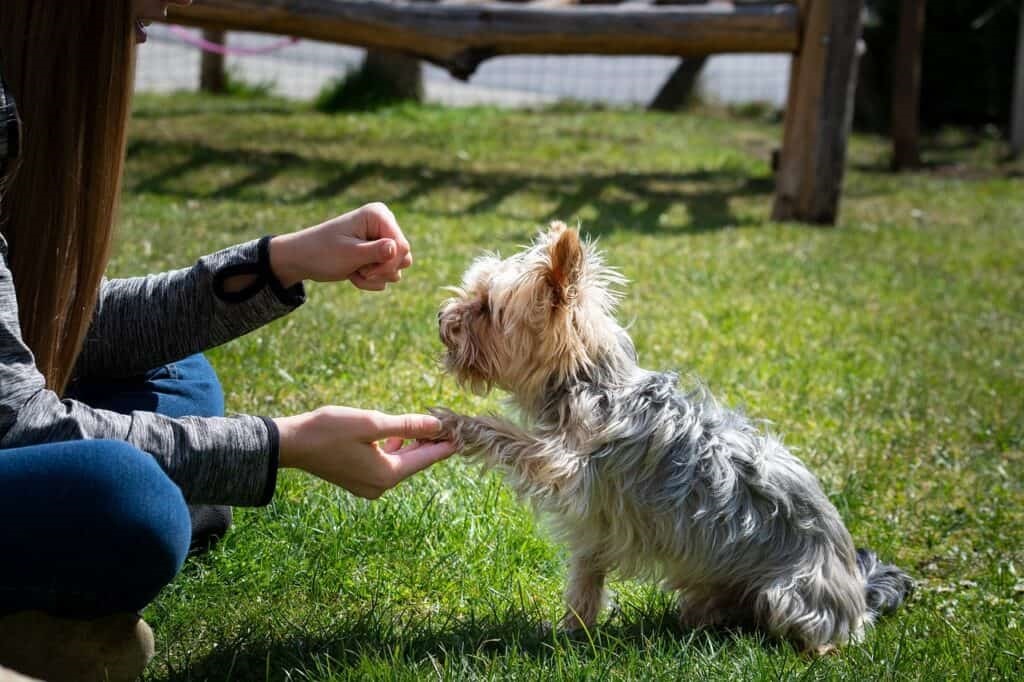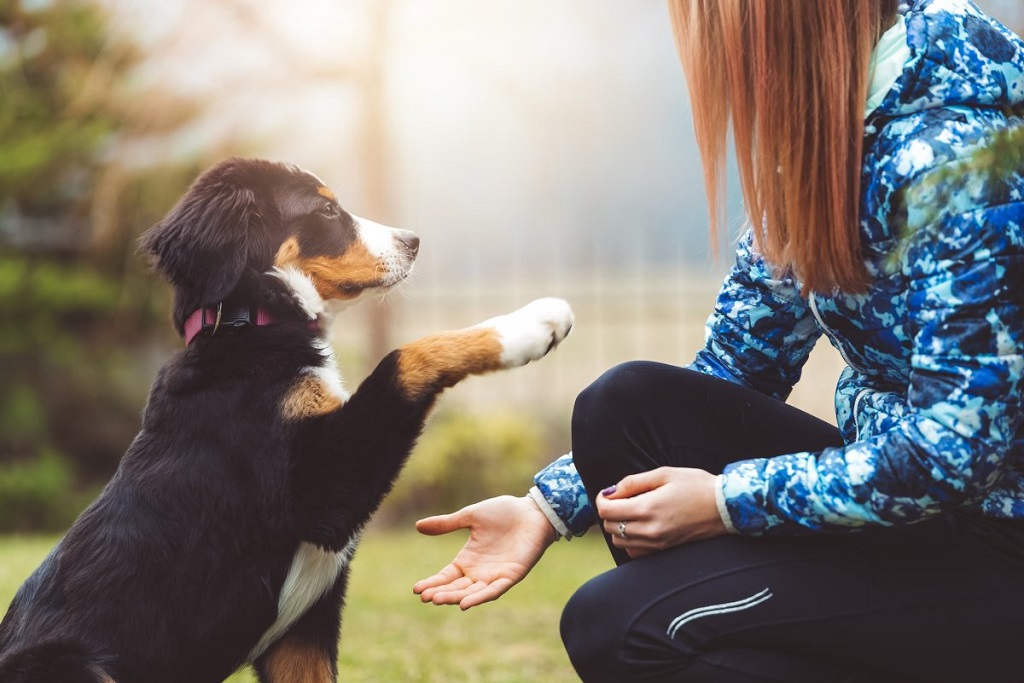Imagine your furry friend shaking your hand, rolling over on command, or even fetching your slippers! Teaching your dog tricks is a rewarding experience that strengthens your bond, provides mental stimulation, and can even be incredibly fun. The good news? Regardless of breed, any dog can learn new tricks with patience, positive reinforcement, and the right approach.
This guide equips you with the secrets professional dog trainers use to turn even the most stubborn pup into a trick-performing star.
Why Train Your Dog Tricks? Benefits Beyond Bragging Rights
Training your dog goes beyond entertainment. Here are some compelling reasons to teach your dog tricks:
- Strengthen Your Bond: The positive reinforcement used in trick training fosters a deeper connection between you and your dog.
- Mental Stimulation: Learning new tricks keeps your dog’s mind sharp and prevents boredom, which can lead to destructive behaviors.
- Improved Obedience: The focus and discipline required for trick training translate to better overall obedience in everyday situations.
- Boosted Confidence: Mastering tricks can boost your dog’s confidence and self-esteem.
- Fun and Rewarding: Training your dog is a fun and rewarding activity for both you and your furry friend.
Understanding Your Dog: Learning Styles and Motivators
Every dog is an individual with unique learning styles and motivations. Here’s how to unlock your dog’s potential:
- Food Motivated: Many dogs are highly food-motivated. Use small, high-value treats like bits of cooked chicken or cheese to reward desired behaviors.
- Playful Pups: For playful dogs, incorporate their favorite toys into the training process. Rewarding them with playtime after a successful trick keeps them engaged.
- Praise and Affection: Some dogs thrive on verbal praise and physical affection. Shower them with love and “good boy/girl” affirmations when they get it right.
The Secret Weapon: Positive Reinforcement
Positive reinforcement is the foundation of successful dog training. It involves rewarding your dog for desired behaviors, making them more likely to repeat them. Here’s how to implement it effectively:
- Clicker Training (Optional): Clicker training uses a clicking sound to mark the exact moment your dog performs the desired behavior. This precise timing strengthens the association between the action and the reward.
- Treats and Praise: Positive reinforcement doesn’t have to be solely food-based. Combine treats with enthusiastic praise to create a rewarding experience.
- Be Patient and Consistent: Learning takes time. Be patient with your dog and consistent with your training sessions. Short, frequent training sessions are more effective than long, infrequent ones.
- Keep it Fun: Training should be enjoyable for both you and your dog. Keep the sessions short, and positive, and end on a high note when your dog is successful.
From Sit to Shake: Decoding Trick Training Steps
Here’s a breakdown of the basic steps for teaching your dog common tricks:
Teaching “Sit”:
- Hold a treat near your dog’s nose and slowly move it upwards over their head. Their natural reaction is to follow the treat with their eyes, causing them to lower their body into a sitting position.
- The moment your dog’s bottom touches the ground, say “Sit” and reward them with the treat and praise.
- Repeat this process consistently until your dog associates the verbal cue “Sit” with the action of sitting.
Teaching “Shake”:
- Hold a closed fist with a treat inside in front of your dog’s nose.
- Most dogs will paw at your hand in an attempt to get the treat. The moment they make contact with your hand, say “Shake” and reward them with the treat and praise.
- Gradually, over time, begin to hold your fist out without the treat inside. If your dog paws at your empty hand in anticipation of the treat, reward them with praise and occasional treats.
Teaching “Roll Over”:
- Hold a treat near your dog’s nose and slowly move it towards the ground between their front legs.
- As your dog follows the treat with their nose, they will naturally start to roll onto their back.
- The moment their back touches the ground, say “Roll Over” and reward them with the treat and praise.
- Repeat this process consistently, gradually moving the treat further away from their nose and towards their shoulder to encourage a full roll.
Beyond Basic Tricks: Getting Creative
Once your dog has mastered the basics, the possibilities are endless! Here are some ideas for more advanced tricks:
- “High Five”: Extend your open hand horizontally and lure your dog’s paw
- Extend your open hand horizontally and lure your dog’s paw to touch yours with a treat. Reward with praise and the treat when successful.
- “Play Dead”: Hold a treat near your dog’s nose and slowly lower it towards the ground. As your dog follows the treat, gently guide them into a lying position. When they are lying down, say “Play Dead” and reward them with the treat and praise.
- “Fetch”: Introduce a fetching toy and show it to your dog excitedly. Throw the toy a short distance and encourage your dog to chase after it. When they pick it up, guide them back to you and reward them with praise and a treat when they drop the toy at your feet.
- “Spin”: Hold a treat near your dog’s nose and slowly rotate your hand in a circle. Most dogs will follow the treat with their body, naturally spinning around. When they complete a full spin, say “Spin” and reward them with the treat and praise. Gradually fade out the lure of the treat as they become comfortable with the command.

Troubleshooting Common Training Issues
Here are some solutions for common training challenges:
- Losing Focus: If your dog loses interest, shorten your training sessions and keep them fun. Consider using higher-value treats or incorporating playtime as a reward.
- Not Following Commands: Ensure your commands are clear, consistent, and delivered in a positive tone. Go back to basics and practice the cues in a distraction-free environment.
- Undesirable Behavior: If your dog exhibits negative behavior during training, redirect them to the desired behavior with a gentle cue or toy. Never punish your dog for mistakes – focus on rewarding desired actions.
Remember: Consistency and patience are key. Celebrate small victories and enjoy the bonding experience of training your dog.
Beyond Tricks: Building a Well-Behaved Companion
While tricks are fun, prioritize training essential commands like “Sit,” “Stay,” “Come,” and “Heel” for a well-behaved companion. These commands ensure your dog’s safety and make walks and outings more enjoyable for everyone.
Related: Reasons Why You Need to Get a Pet
The Takeaway: Unlocking Your Dog’s Potential
With dedication, positive reinforcement, and the right approach, any dog can learn new tricks. The process strengthens your bond, stimulates your dog’s mind, and creates a fun and rewarding experience for both of you. So, grab some treats, unleash your inner dog trainer, and get ready to be amazed by your pup’s newfound skills!








